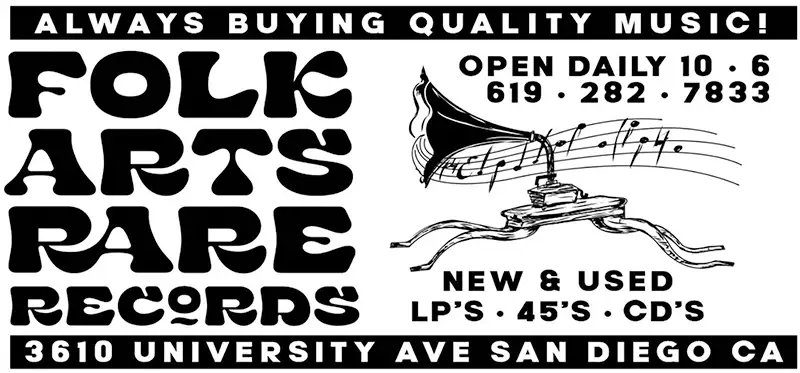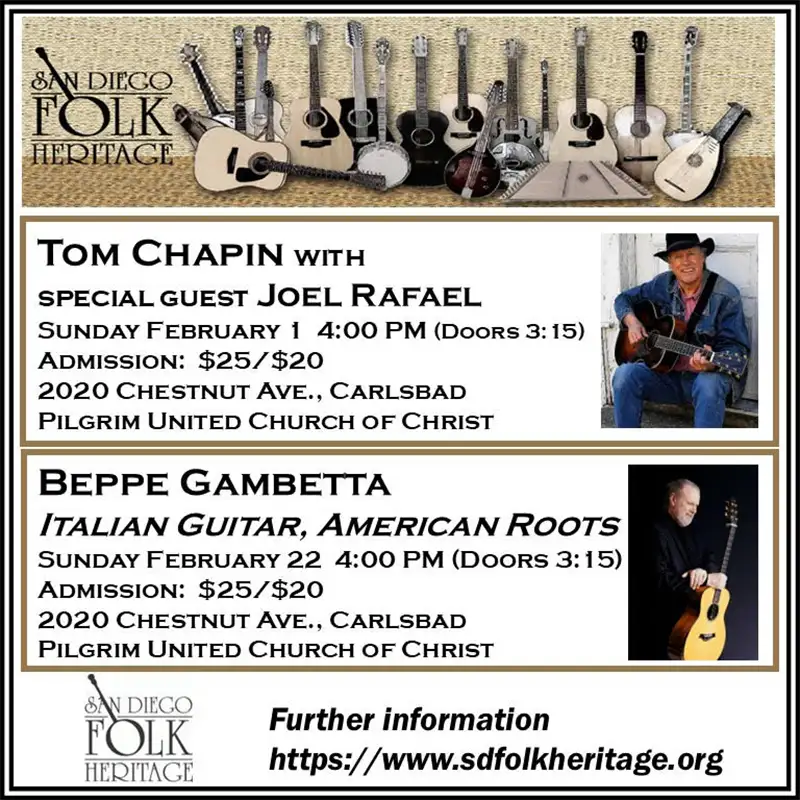Ask Charlie...
Guitar Geekery II
Hello Troubadourians! This column closes my eighth year writing this column for you. It has been my pleasure to do it. And I’m forever grateful that the wonderful Liz Abbott gave me the chance to express myself. Liz has been patient while steadily guiding me to be a better writer even though she says that most of my columns go over her head. I don’t believe it for a minute. In any case, I just have to say; Best. Boss. Ever. Thanks, Liz! Here’s to eight more years… [ed. note: thank you, Charlie!]
Like any writer or journalist, I sometimes have difficulty sorting through my ideas on what to write. I go through stuff like, “I can’t write about that because I wrote a similar column last year (or two years ago)” or “That’s too technical and I’d use up all of my column space just getting through the setup explanation.” But I’ve begun to realize that it’s okay to repeat yourself a little bit because there are always things in every column that you wish you’d said but didn’t have room. Likewise, really technical things can mostly be broken down into understandable chunks if you work at it so sometimes a deep and detailed introduction isn’t necessary. When it is, I resort to multi-part columns so that you, the reader, get as much information as I can possibly deliver within the confines of this column’s format. Still, I try to get everything into a single column in case that is the only one someone has the opportunity to read.
Of course, most of the back issues are online at https://sandiegotroubadour.com/ so you can catch up with anything you might have missed. Still, I prefer to put everything into one column if I can. That said, I do want to follow-up on some of the things in last month’s column that were sort of truncated due to space constraints.
The first thing I’d like to talk about is something I’ve written about before, but it seems appropriate given that I mentioned it in last month’s column. The Gibson Les Paul Custom was introduced in 1953 and differed from the Standard model in several ways: first, it was fancier in that it had binding on the top, back, fingerboard, and headstock. Not only was there binding in more areas (the Standard was only bound on the top and fingerboard), the binding was white/black/white, aka “double bound” as opposed to the single strip of white binding on the Standard. The Custom also had an ebony fretboard and large rectangular inlays. The only available finish was black (ebony) and the guitar had gold hardware, which, by 1954, included the new “tune-O-matic” ABR-1 bridge and stop bar tailpiece. Les Paul himself specified the appointments so that the guitar would look good on television, “like a tuxedo…,” he once said. The pickups were different as well: a differently wound P-90 in the bridge position and a completely differently constructed P-90 in the neck position. It was this neck pickup that was most significant. The basic P-90 pickup used Alnico 5 bar magnets and steel screws as adjustable pole pieces. By contrast, the neck pickup in the Custom featured hand-beveled rectangular Alnico bar magnets as non-adjustable pole pieces, which protruded through the cover making them resemble staples, hence the nickname for this pickup was “Staple-top.” This pickup had a sweeter tone that the standard P-90 and was a direct precursor to the famed PAF (Patent Applied For) humbucking pickup that would become the standard pickup on both the Les Paul Standard and Custom models in 1957. One unseen but significant difference between the Standard and Custom models was that the body construction of the Standard was (and still is) a mahogany slab with a carved maple top while the body of the Custom was solid mahogany with the same top carve as the Standard. The solid mahogany body gave the Custom a different tonality, slightly sweeter and without as much attack and less emphasis on higher frequencies. It’s a subtle but noticeable difference and many people prefer the tone of a solid mahogany guitar. The solid mahogany body construction was apparently Les Paul’s personal preference and this is backed up by the solid mahogany construction of his “signature” model guitars later in the history of the guitar model. In 1957, in addition to the PAF pickups mentioned above, the Custom was changed to have the same mahogany/maple construction as the standard, leaving the fancier appointments and ebony fretboard as the main differentiator between the models. But it wasn’t just the PAFs that were added to both the Standard and Custom in ’57. While the Standard received two PAF’s—as did a few Customs—most Customs received three PAFs. Some players of ’53 to ’56 Customs wanted the PAF sound in their guitars, so many were altered to accept the larger pickups. One of the most famous of these converted Customs is Peter Frampton’s guitar. This is the guitar that appears on the cover of the Frampton Comes Alive album. Of course, the special tone of this guitar appears on almost all of the tracks on this album as well as Frampton’s other recordings. This guitar has its own fascinating story, but we’ll save that one for another column. Another famously modified Les Paul is the 1954 Standard that Jeff Beck used on his Blow by Blow recording. The guitar would have originally been a goldtop with a stop bar bridge and P-90 pickups. By the time Beck had the guitar, the original P-90s had been replaced with PAFs and the guitar had been refinished, but he had it refinished in a very dark brown, almost black, which, with age, has taken on the dark purplish hue known as oxblood. I’ve seen replicas of both the Frampton and Beck Les Pauls made by the Gibson Shop that were reported to be “clones” of the originals including all of the dings, dents, and scratches. The Frampton guitar appeared to be a very well executed conversion but the Beck guitar was a real “hack job.” The pickups didn’t fit well and the treble side of the bridge collided with the mounting ring of the bridge pickup. But regardless of the quality of the conversions, both guitars were both sonic—and visual—inspirations for countless guitarists. And, as I wrote in last month’s column, they were an inspiration for the luthiers at Collings guitars and me, too. They’ve built a three-pickup “Black Beauty” style, City Limits Deluxe (2018) and then an all mahogany (actually primavera) City Limits Deluxe based on a ’54 custom. And now they’re making one that has features of both guitars just for me. Merry Christmas!
Need to know? Just ask… Charlie (ask.charlie@hotmail.com)







